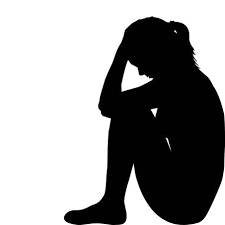“Suicide doesn’t end the chances of life getting worse, it eliminates the possibility of it ever getting any better.” – Unknown
The second full week of September each year is designated as National Suicide Prevention Week and yearly September 10th is World Suicide Prevention Day.
World Suicide Prevention day and National Suicide Prevention Week draw attention to the problem of suicide in the United States and the world. The campaigns strive to reduce the sigma surrounding the topic of suicide. It also encourages the pursuit of mental health assistance and support those people who have attempted suicide. Health Organizations conduct depression screenings, both self-administrated and online tests and refer individuals to a national toll-free number such as 1-800-273-8255 (TALK) or 1-800-784-2433 (SUICIDE).
In 2003 the International Association of Suicide Prevention (IASP) organized the first World Suicide Prevention Day. The World Health Organization soon began co-sponsoring events with IASP for suicide prevention and awareness. Themes throughout the years have included, “Working Together to Prevent Suicide,” “Connect, Communicate, Care,” and “Suicide Can be Prevented!” As of September 2019, nearly 70 countries work together to bring awareness to suicide prevention.
It is important to understand the issues concerning suicide and mental health in order to take part in suicide prevention. By training ourselves to know the risk factors and warning signs we can help those in crisis.
The Suicide Prevention Lifeline website (https://suicidepreventionlifeline.org/how-we-can-all-prevent-suicide/) provides the following information:
Know the Risk Factors
Risk factors are characteristics that make it more likely that someone will consider, attempt, or die by suicide. They can’t cause or predict a suicide attempt, but they’re important to be aware of.
- Mental disorders, particularly mood disorders, schizophrenia, anxiety disorders, and certain personality disorders
- Alcohol and other substance use disorders
- Hopelessness
- Impulsive and/or aggressive tendencies
- History of trauma or abuse
- Major physical illnesses
- Previous suicide attempt(s)
- Family history of suicide
- Job or financial loss
- Loss of relationship(s)
- Easy access to lethal means
- Local clusters of suicide
- Lack of social support and sense of isolation
- Stigma associated with asking for help
- Lack of healthcare, especially mental health and substance abuse treatment
- Cultural and religious beliefs, such as the belief that suicide is a noble resolution of a personal dilemma
- Exposure to others who have died by suicide (in real life or via the media and Internet)
Know the Warning Signs
Some warning signs may help you determine if a loved one is at risk for suicide, especially if the behavior is new, has increased, or seems related to a painful event, loss, or change. If you or someone you know exhibits any of these, seek help by calling the Lifeline.
- Talking about wanting to die or to kill themselves
- Looking for a way to kill themselves, like searching online or buying a gun
- Talking about feeling hopeless or having no reason to live
- Talking about feeling trapped or in unbearable pain
- Talking about being a burden to others
- Increasing the use of alcohol or drugs
- Acting anxious or agitated; behaving recklessly
- Sleeping too little or too much
- Withdrawing or isolating themselves
- Showing rage or talking about seeking revenge
- Extreme mood swings
How to support someone who feels suicidal
According to the American Foundation for Suicide Prevention (AFSP), there is no single cause for suicide, although depression is cited as the most common condition associated with it. Warning signs the association advises to look out for include:
- Talking: If someone talks about dying by suicide, feeling hopeless, having no reason to live or being a burden to others, these could be signs that they are having suicidal thoughts.
- Behaviors: Increased use of alcohol or drugs, withdrawing from activities, isolating from people, sleeping too much or too little or giving away prized possessions are some examples of behaviors people might display if they’re feeling suicidal.
- Mood: People who are considering suicide often display moods such as depression, anxiety, shame, anger, agitation, or even relief.
Sources:
https://afsp.org/about-suicide/suicide-statistics/
https://suicidepreventionlifeline.org/how-we-can-all-prevent-suicide/
https://www.newsweek.com/world-suicide-prevention-day-2019-quotes-advice-1458265
a Free Consultation





